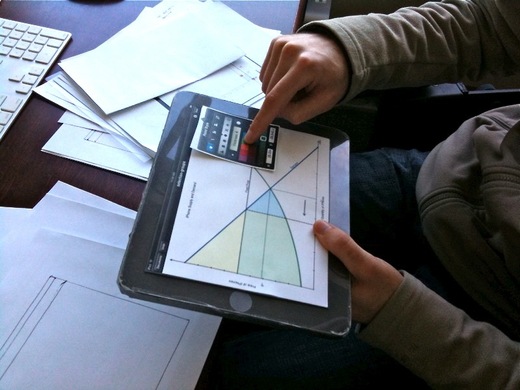
How do you test the way an app works on a piece of hardware no one can actually use yet? Omni Group made a fake iPad in order to try out UI designs before the release of the real device.
You’re reading Signal v. Noise, a publication about the web by Basecamp since 1999. Happy !

How do you test the way an app works on a piece of hardware no one can actually use yet? Omni Group made a fake iPad in order to try out UI designs before the release of the real device.
Dimitri
on 02 Apr 10In addition to a papercraft model, I printed out a life-sized frame that I overlay on my whiteboard. It makes it easy for me to sketch out my UI’s. Image: http://yfrog.com/2hdy9j I’ll probably keep using it after tomorrow for the same reason.
Daniel
on 02 Apr 10I think it’s kinda funny, that this is blog-worthy. Please don’t get me wrong; I clicked this post because I found it interesting myself. But then I remembered “Oh, right paper protyping. First day of interaction design 101”.
So it’s a little ironic is that the most basic, well-known, and simple tools for assessing/testing UI design have somehow become noteworthy :-)
@Dimitri: Neat. I once had one of those whiteboard message board you hang on your fridge, and used that for sketching out page layouts and such. Don’t know how, but I lost it. Need to get a new one. It was great to use with clients, because well, it was an interactive tablet.
Marilyn
on 02 Apr 10It’s a little more than basic paper prototyping when there’s a 3D printer making a mock iPad—the shape and size have lot to do with how it’ll get held, and therefore, where the buttons should best be placed.
Jane Quigley
on 02 Apr 10I’m a big fan of the OmniGroup and Ken Case – they always keep the user experience as their #1 priority. I beta a lot of products and services and was lucky enough to be part of the OmniFocus beta. It has been my favorite experience, simply because of their team – every interaction was beyond positive and thorough- and they made everyone feel heard and important.
Really smart group of people to boot.
Michael Hartmann
on 03 Apr 10This reminds me of how I tried to figure out what it is to use a Wii. When I was working for Razorfish|Neue Digitale a couple years back and Nintendo launched the Wii for Germany they didn’t give us a Wii to check how the Wii’s product websites would look on the screen. So I brought my old TV and displayed the websites on it and borrowed a laser pointer to understand what it is to point at an object 3-5 meters away. It turned out that it’s hard to fix an excact point.
It was good for many aspects however scrolling and a lot of other interactions were pretty new for us and we couldn’t really design for it.
Daniel
on 04 Apr 10@Marilyn: I didn’t mean to belittle what the OmniGroup guys did; I think it’s great that they put so effort into their UI design, and I love their products. Still, when paper prototyping something handheld, it’s pretty obvious (or it should be) that you also make some sort of stand-in for the device, and don’t just put papers flat on a table. But it’s still paper prototyping in my book, since making a mobile device mock-up with a paper UI literally was my “first day of interaction design 101”.
True, they went and 3D printed the thing, which I think may have been a little over the top (but no doubt a fun project in itself!), whereas I used a rigid foam block, with some steel rods in it for heft. Eitherway, I still consider it paper prototyping.
This discussion is closed.